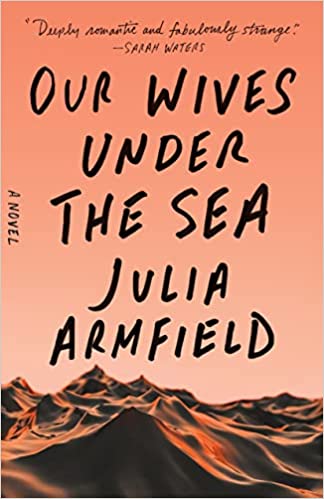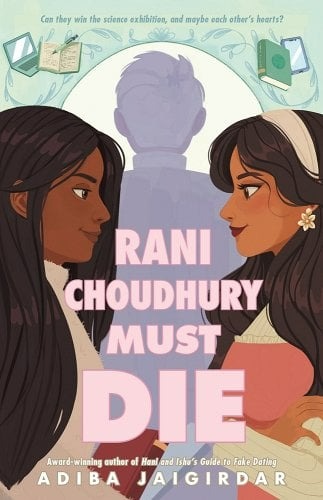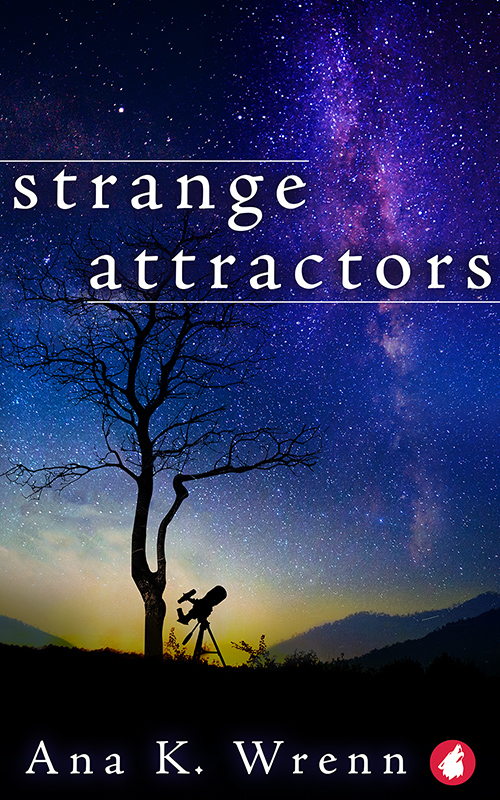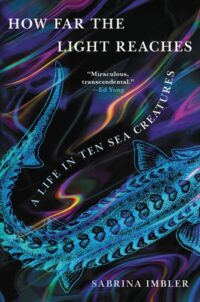If you’re looking for a fun one-sitting read, why not pick up this trans lesbian “mech rom-com graphic novel,” as the blurb describes it? I feel like you’re already sold, but I’ll keep going anyway. LSBN is a project to develop a mech suit to battle the giant, monstrous aliens that have descended to Earth.Read More
Love, Grief, and the Abyssal Depths of the Ocean: Our Wives Under the Sea by Julia Armfield
There is a peculiar kind of sadness in telling a love story backwards, starting with its end. There’s the tenderness and domesticity of an established relationship, and the inevitable fact of its eventual nonexistence. This love story captures a relationship by chronicling its end. Our Wives Under the Sea, Julia Armfield’s debut novel, is a captivating tale told in alternating perspectives about a couple, Miri and Leah, the latter of whom goes out on a deep-sea exploration and comes back irrevocably changed. The book weaves Miri’s struggle to reconcile the slow slipping away of her wife, Leah, with Leah’s recounting of the events of the deep-sea submersible dive.
A Sciencey Sapphic Read: Rani Choudhury Must Die by Adiba Jaigirdar
Rani Choudhury Must Die by Adiba Jaigirdar is a book I’ve been looking forward to. I really enjoyed Hani and Ishu’s Guide to Fake Dating, as well as The Henna Wars by the same author, and I was in the mood for a teen read! This story follows Rani and Meghna, ex-best friends who find out they’re dating theRead More
More Than a Statistic: Every Variable of Us by Charles A. Bush
Buy this from Bookshop.org to support local bookstores and the Lesbrary! Alexis Duncan is a Black teenage girl from Philadelphia whose incredible basketball skills are her one ticket to receiving a scholarship and getting out of her poverty-stricken neighbourhood. However, after getting injured during a shooting at a high school party and being told sheRead More
You Need to Read Last Night at the Telegraph Club by Malinda Lo
Buy this from Bookshop.org to support local bookstores and the Lesbrary! I’m embarrassed to admit I only just read this for the first time. I’ve read every other Malinda Lo book. I’ve had a copy since it first came out—in fact, I’ve owned two copies, because I also spent $100 on a signed hardcover (itRead More
A Dazzling Debut: How Far the Light Reaches by Sabrina Imbler
Buy this from Bookshop.org to support local bookstores and the Lesbrary! I first learned about Sabrina Imbler (they/them) last year when my girlfriend and I traveled to Seattle to watch the UConn Women’s Basketball team compete in the Sweet 16. Whenever I travel, I like to visit a local bookstore, which is how we endedRead More
A Chaos Theory Psychological Thriller: Strange Attractors by Ana K. Wrenn
Bookshop.org Affiliate Link Strange Attractors by Ana K. Wrenn was released in August 2022 and it follows the complex character of Sonja J. Storey. The book has been described as a psychological thriller, and it takes a deep dive into the darker side of academia. It is not a light and fluffy romance, but ifRead More
Nat reviews How To Excavate a Heart by Jake Maia Arlow
Amazon Affiliate Link | Bookshop.org Affiliate Link Sweet yet angsty. Coming of age and coming out stories. A meet cute that’s…not so cute. Jewish holiday rom com. All the big, tender feels of young love. Non-stop cackling, except when you take a break to have a good cry. A prominently featured corgi. These are aRead More
Maggie reviews A Scatter of Light by Malinda Lo
Amazon Affiliate Link | Bookshop.org Affiliate Link I was ecstatic when I heard that Malinda Lo was writing a loosely connected follow up to Last Night at the Telegraph Cub because Last Night at the Telegraph Club is a hugely important lesbian coming of age novel set in 1950s San Francisco Chinatown that A) I wish I had hadRead More
Danika reviews How Far the Light Reaches: A Life in Ten Sea Creatures by Sabrina Imbler
Amazon Affiliate Link | Bookshop.org Affiliate Link This may be my favourite book I’ve read this year, and there’s been some stiff competition. How Far the Light Reaches is exactly what the subtitle promises: a life in ten sea creatures. It weaves together facts about aquatic animals with related stories from the author’s own life.Read More




